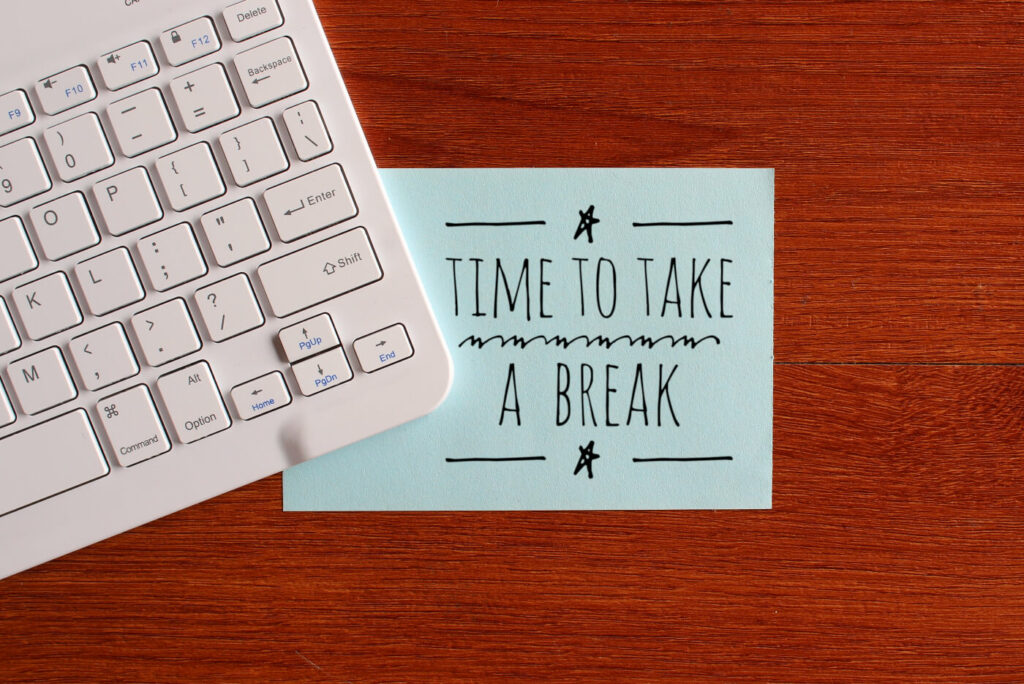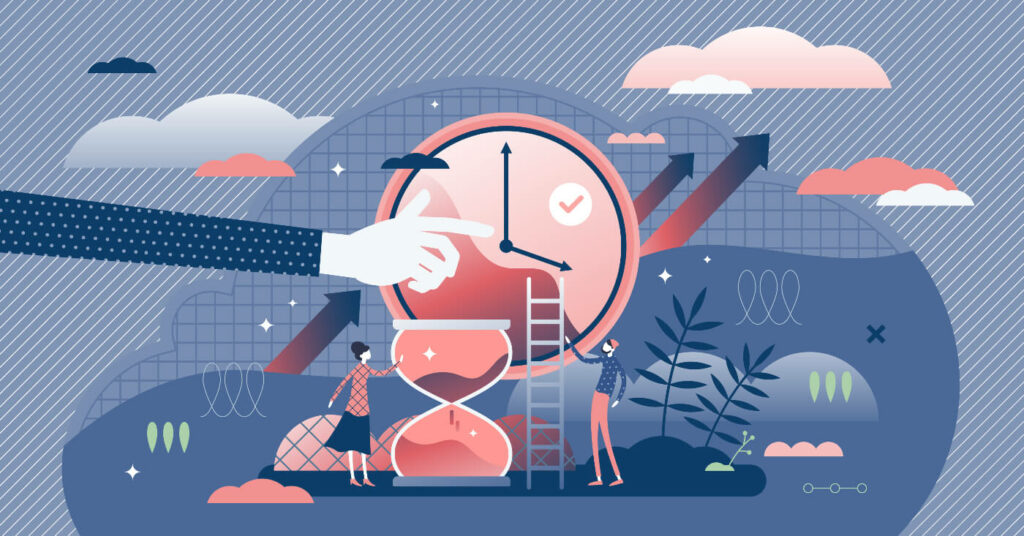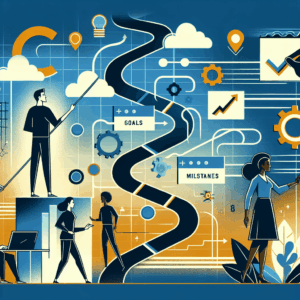It’s a new year and a new productive you! Tired of the same old ways of managing your important tasks? At Leantime, we understand the diverse needs of our users, especially those navigating the challenges of ADHD and neurodivergence.
We curated a list of 24 unique and effective productivity tips to help you thrive in your work and personal life.
Let’s dive in!
Table of contents
- 1. Foster a “Done” List
- 2. Leverage the Zeigarnik Effect
- 3. Use Constraints to Spark Creativity
- 4. Employ the Two-Minute Rule
- 5. Establish a “Shutdown Ritual”
- 6. Apply the 80/20 Rule to Your To-Do Lists
- 7. Experiment with Different Environments
- 8. Implement “If-Then” Planning
- 9. Encourage to Take a Break
- 10. Practice the “Eisenhower Matrix” in Reverse
- Bonus: 14 More Productivity Tips
- Final Thought
Discover our top ten methods to skyrocket your productivity. From innovative time-management techniques to mindset shifts, we’ve compiled the most effective strategies to help you achieve more in less time. Dive in to transform your approach to work and life!
1. Foster a “Done” List
Creating a “Done” list is a powerful way to acknowledge and celebrate your accomplishments, big or small, throughout the day. It serves as a visual reminder of your progress and can be an effective tool. Celebrate your victories by maintaining a “done” list alongside your to-do list. Witnessing your accomplishments visually boosts motivation and provides a sense of progress.
Did You Know: Completing individual tasks triggers the release of dopamine in the brain, causing feelings of happiness, pleasure, and motivation. [1]
2. Leverage the Zeigarnik Effect
The Zeigarnik Effect, named after psychologist Bluma Zeigarnik, refers to the psychological phenomenon where people tend to remember uncompleted or interrupted tasks better than completed ones. This effect is rooted in the idea that the human mind tends to keep incomplete tasks in working memory, creating a mental tension that motivates individuals to return and complete the tasks.
While the Zeigarnik Effect can happen involuntarily, intentionally leaving tasks incomplete or using the effect to your advantage can be a strategic approach in certain situations. Kickstart tasks and intentionally leave them incomplete. The Zeigarnik Effect helps you remember and resume uncompleted tasks, acting as a mental cue for increased productivity.
3. Use Constraints to Spark Creativity
Using constraints to spur creativity might seem counterintuitive at first, but it taps into the idea that limitations can enhance problem-solving and innovation. Having few resources can spur new ways to get around the challenges in order to optimize the situation.
Embrace limitations as a challenge. Restricting resources can ignite creativity and lead to innovative solutions. Embrace the power of constraints in your problem-solving journey.
Read More: Open Source Idea Management Software: The Best Thing You Can Do for Innovation
4. Employ the Two-Minute Rule
Implementing this technique involves creating simple and actionable guidelines to deal with important tasks that take two minutes or less to complete immediately.
Here’s a step-by-step approach to set and apply the Two-Minute Rule for personal productivity:
Define the Two-Minute Rule
Clarify for yourself that any task requiring two minutes or less to complete should be done immediately, without delay.
Identify Two-Minute Tasks
Make a list of tasks that typically take two minutes or less. These could include responding to short emails, filing documents, making quick phone calls, or jotting down brief notes.
Keep a Running List
Maintain a running list of small tasks that come up and could be handled in two minutes or less. This list serves as a quick reference for immediate action.
When you instantly tackle difficult tasks in less than two minutes, you prevent the buildup of small tasks, saving you time and keeping your to-do list manageable. This can help accomplish important tasks.
5. Establish a “Shutdown Ritual”
A shutdown ritual, also known as an end-of-day routine, is a deliberate and structured set of activities that individuals perform to mark the end of their workday.
This ritual serves as a psychological and behavioral signal that work-related tasks are concluding, helping individuals transition from their professional responsibilities to personal time.
A study found that 68% of a test group of 26 managers were able to disconnect from work, up from 40% after using some techniques. [2]
Create a routine to signify the end of your workday. Whether it’s organizing your desk or planning for the next day, a shutdown ritual helps create a mental boundary between work and personal time.

6. Apply the 80/20 Rule to Your To-Do Lists
The 80/20 rule, also known as the Pareto Principle, is a principle that suggests that approximately 80% of effects come from 20% of causes. This concept originated with the Italian economist Vilfredo Pareto, who observed that approximately 80% of Italy’s wealth was owned by 20% of the population.
Identify and prioritize a new task that contributes most to your goals. The 80/20 rule guides you to focus on the vital few high-value tasks that drive the majority of your success.
Read More: How to Prioritize Tasks When Everything Feels Important
In terms of productivity and time management, the 80/20 rule suggests that a substantial portion of your results will come from a small percentage of your efforts. By identifying and focusing on the most critical tasks or activities that contribute the most to your goals, you can maximize efficiency and impact.
Did You Know: Research suggests business managers across industries use the Pareto principle to narrow their focus and identify the most pressing issues in their departments.
More: Discover 5 time management techniques.
7. Experiment with Different Environments
Experimenting with different work environments can substantially boost productivity by allowing individuals to discover the optimal setting for varied tasks. For instance, creative work may thrive in a relaxed environment, while analytical tasks benefit from a structured, quiet space. Such changes can enhance adaptability, making it easier to maintain productivity under different conditions.
New environments also provide fresh stimuli, breaking the monotony and fostering inspiration. Environments that prioritize physical and mental well-being, such as ergonomic settings or spaces with natural lighting, can improve comfort and reduce stress, thereby boosting productivity.
Read More: Creating a Supportive Work Environment
The autonomy to choose and change workspaces can also increase motivation and self-awareness as individuals learn about their work habits and preferences. Furthermore, varied environments, particularly shared or public spaces, offer opportunities for networking and collaboration, which can lead to increased creativity and resource sharing.
Here are compelling reasons to explore alternative work settings:
- Increases flexibility
- Provides networking opportunities
- Increases focus
- Encourages movement
8. Implement “If-Then” Planning
Overcome procrastination by creating specific plans for task completion. Use implementation intentions to link your intentions to specific cues and boost efficiency.
Implementing “if-then” planning, also known as implementation intentions, can be a highly effective strategy for enhancing productivity and overcoming procrastination. This technique involves creating specific plans for when and where you will perform a particular task.
Here are some compelling reasons to incorporate “if-then” planning into your routine:
- Reduces decision fatigue
- Overcomes procrastination
- Increases task initiation
- Builds consistency
- Provides a sense of control

9. Encourage to Take a Break
Embracing micro-breaks throughout the day offers a myriad of benefits for both mental and physical well-being. These brief pauses, typically lasting just a few minutes, provide an opportunity to recharge and rejuvenate. Physically, micro-breaks combat the negative effects of sitting for long hours, reducing the risk of musculoskeletal issues and boosting overall circulation.
Mentally, taking a break offers a respite from continuous concentration, preventing burnout and enhancing cognitive performance. They serve as moments of reflection, allowing individuals to recalibrate focus and approach similar tasks with renewed clarity.
Did You Know: Employees can increase their overall productivity by 2.85 hours a week or 11.4 hours per month with two 15-minute breaks.
Additionally, micro-breaks promote stress reduction by encouraging deep breaths, stretches, or brief walks, fostering a healthier work environment. Incorporating these short intervals into the daily routine ultimately contributes to sustained energy levels, increased productivity, and a more balanced and focused mindset.
Take short, rejuvenating micro-breaks throughout the day. A quick stretch or a breath of fresh air helps maintain focus and energy levels.
Did You Know: Breaks give your mind a much-needed chance to recover from intense focus. [3]
10. Practice the “Eisenhower Matrix” in Reverse
The Eisenhower Matrix, named after President Dwight D. Eisenhower, is a powerful productivity tool that helps individuals prioritize tasks based on urgency and importance. This matrix categorizes the most important tasks into four quadrants: urgent and important (do immediately), important but not urgent (schedule), urgent but not important (delegate), and neither urgent nor important (eliminate or defer).
By systematically organizing responsibilities, the Eisenhower Matrix aids in making informed decisions about where to direct time and energy. This strategic approach enhances efficiency and fosters a focus on high-priority tasks that align with long-term goals, providing a holistic perspective on time management and productivity.
Read More: How to Focus Better: Top Strategies That Work
Prioritize tasks that are neither urgent nor important for personal development and long-term goals. Flip the matrix and focus on the tasks that truly matter.

Bonus: 14 More Productivity Tips
In addition to our top picks on how to be more productive, we’ve gathered 14 bonus productivity habits and tips to boost your efficiency further. Each is a nugget of wisdom designed to help streamline your tasks, stay focused, and reduce stress.
Looking to improve your daily routine or tackle big projects? These insights provide valuable guidance to unlock your potential!
11. Engage in “Worst-First” Thinking
Starting your day by tackling the most difficult task on your to-do list can be incredibly helpful. Completing a challenging task early in the morning sets a positive tone for the rest of the day and gives you a sense of accomplishment that can help you stay motivated and focused.
This approach can also help to reduce anxiety and stress, as you won’t have to worry about the difficult task hanging over your head all day. Instead, you can move on to other tasks with a sense of clarity and purpose, knowing that you have already accomplished something meaningful.
So, if you want to boost your productivity, try conquering the toughest task first thing in the morning!
12. Create a Personal Motivation Playlist
One way to boost productivity and inspiration during work is to create a playlist filled with motivating songs. By playing this playlist during tasks that require focus and creativity, you can energize yourself and maintain a positive momentum throughout the day. Select songs that inspire you and align with your taste, as this will help you stay engaged and motivated.
Consider including various genres and tempos to help keep your mind engaged and prevent boredom. With a well-crafted playlist, you can tackle your work with more confidence and enthusiasm.
13. Embrace “Structured Procrastination”
One of the best ways to manage procrastination is by focusing on less critical tasks. In doing so, you can ensure that you remain productive on multiple fronts, even when facing challenges with a single task. You can create a sense of accomplishment and avoid stagnation by prioritizing and tackling less critical tasks.
This technique can also help you build momentum and tackle more challenging tasks more efficiently. Also, it can help to break larger tasks into smaller, more manageable ones to make progress more tangible and achievable.
14. Practice “Strategic Boredom”
This may sound odd, but it’s suggested that we intentionally incorporate periods of boredom into our daily lives. When we are bored, our mind is free to wander and explore without any external distractions.
This state of mind often leads to creative thinking and innovative problem-solving. Allowing ourselves to be bored allows our brains to generate new ideas and connect seemingly unrelated concepts. So, next time when you find yourself with nothing to do, embrace the boredom and see where your mind takes you.
15. Use Positive Peer Pressure
One effective way to stay motivated while pursuing your goals is to share them with supportive friends or colleagues. You can benefit from mutual awareness, progress tracking, and feedback by creating an accountability group.
This can help increase your motivation, improve your work performance, and ensure that you stay on track toward achieving your goals. By regularly checking in with each other and sharing your progress, you can hold each other accountable for your actions toward your goals and celebrate each other’s successes along the way.
16. Implement the “Five-Minute Favor”
Dedicate five minutes to helping someone. This small act supports others and creates a positive ripple effect, elevating your mood and productivity.
17. Integrate “Mindful Multitasking”
Combine mindless tasks with mindful ones. Boost productivity by, for example, listening to educational podcasts during routine chores.
18. Create a “Sensory Work Environment”
Engage multiple senses while working. Integrate scents, textures, or ambient sounds to cultivate a positive and unique work atmosphere.
19. Apply the “Two Chairs” Technique:
Gain diverse perspectives by imagining a conversation with yourself in two different chairs when facing a challenging decision, problem, or other distractions.
20. Implement the “Epic To-Do List”
Craft a comprehensive to-do list encompassing both daily tasks and life goals. Break down big goals into actionable steps and tackle them one by one.
21. Experiment with “Reverse Pomodoro”
Flip the Pomodoro Technique by working for a short period, followed by a longer break. Explore how this approach impacts your productivity levels.
22. Use “Habit Stacking” for Micro-Productivity
Integrate small tasks into existing habits. For instance, incorporate a quick stretch every time you make a phone call. Micro-tasks add up over time.
23. Implement “Silent Meetings”
Conduct meetings without verbal communication. Use written tools for thoughtful and concise discussions, fostering efficiency.
24. Explore “Speed Learning” Techniques
Utilize speed reading or accelerated learning methods to grasp new concepts quickly. Save time on learning while enhancing information retention.
Final Thought
Incorporate these 24 tips into your daily routine and witness the transformative power they bring to your productivity. Maintaining healthy habits can be challenging, but even small changes can greatly impact energy, focus, and overall health.
At Leantime, we believe in creating a work management environment that caters to your unique needs. Unleash your potential and redefine productivity on your terms!
Resources
[1] Bromberg-Martin, E. S., Matsumoto, M., & Hikosaka, O. (2010). Dopamine in Motivational Control: Rewarding, Aversive, and Alerting. Neuron, 68(5), 815–834. View Study
[2] Bright, D. (2017, November 23). How to Let Go at the End of the Workday. Harvard Business Review. View Resource
[3] Coffeng JK, van Sluijs EM, Hendriksen IJM, van Mechelen W, Boot CRL. Physical Activity and Relaxation During and After Work are Independently Associated With the Need for Recovery. J Phys Act Heal [Internet]. 2015 Jan 1 [cited 2019 Aug 29];12(1):109–15. View Resource





